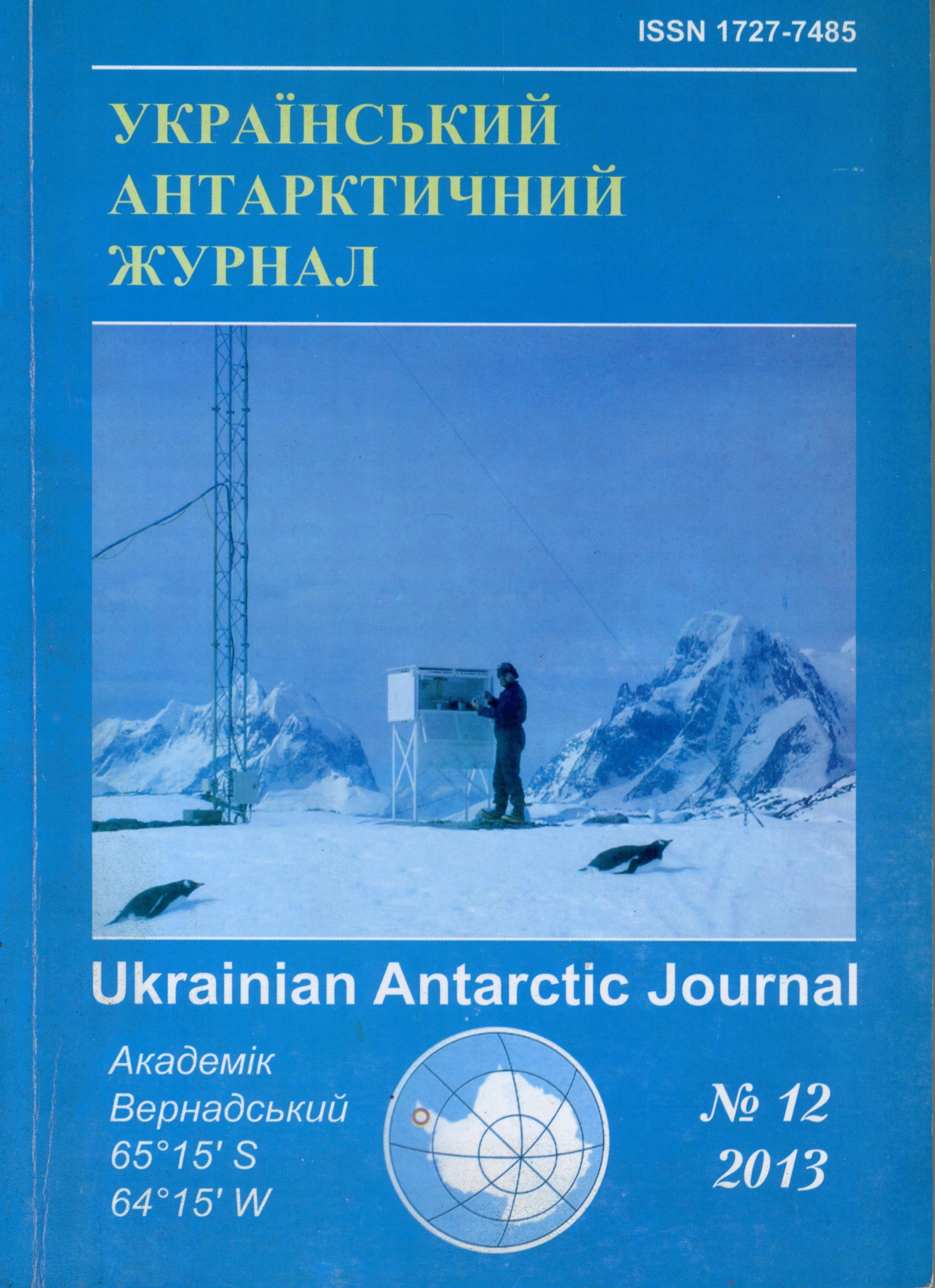№ 12 (2013): Український антарктичний журнал
Articles
Опубліковано
December 15, 2013
Ключові слова
- secular and Sq-geomagnetic variations,
- ionospheric conductivity,
- trend
Як цитувати
Максименко, О. І., Бахмутов, В. Г., Кіліфарська, Н., & Шендеровська, О. Я. (2013). Трендові зміни геомагнітного поля на обсерваторії "Аргентинські острови": ефект в Sq-варіаціях. Український антарктичний журнал, (12), 62-68. https://doi.org/10.33275/1727-7485.12.2013.249
Анотація
Обчислено довгочасні тренди добових амплітуд геомагнітних Sq-варіацій на обсерваторії “Академік Вернадський”, які послаблюються на кінець інтервалу 1958–2010 рр. Величини трендів SqH, SqZ-варіацій мають однакове значення – 0,06 нТл/рік, але різні знаки, що зумовило відповідно 8,6% зменшення і 11,3% збільшення добових амплітуд Sq варіацій при ~16% рості іоносферної провідності за 50 років досліджень. Виявлено 10% вклад змін (вікового ходу) магнітного поля в тренд SqH геомагнітних варіацій у літній період та відсутність впливу Ар індексу і аномалій СО2 на AIA із зменшенням магнітного поля в минулому столітті.
Посилання
- Danilov, A. (2012). Dolgovremenny`e trendy` v verxnej atmosfere (obzor) [Longterm trends in the upper atmosphere (a review)]. Geomagnetizm i ae`ronomiya, 52(3), 291–312.
- Yaremenko, L.N. (1992). Solnechny`e sutochny`e variacii geomagnitnogo polya [Sun daily variations of the geomagnetic field]. Kyiv, Naukova Dumka.
- Cnossen I., & Richmond, A. (2012). Changes in the Earth's magnetic field over the past century: effects on the ionosphere-thermosphere system and solar quiet Sq-magnetic variation. Journal of Geophysical Research.
- Elias Ana, G., Zossi de Artigas, M., & de Haro Barbas, B. F. (2010). Trends in the solar quiet geomagnetic field variation linked to the Earth’s magnetic field secular variation and increasing concentrations of greenhouse gase. Journal of Geophysical Research, 115(A8).
- Kilifarska, N. (2012). Climate variability – a concert for O2, H2O vapour and ”orchestra” . Tr. Seminara NANU i Fonda fundamental`ny`x issleedovanij Rossii “Problemy` i dostizheniya dolgosrochnogo meteorologicheskogo prognozirovaniya”. –5-7 October 2011. Kyiv, Nika-centr. pp. 167–179.
- Macmillan, S., & Droujinina, A. (2007). Long-term trends in geomagnetic daily variation. Earth Planets Space, 59, 391–395.
- Maksimenko, O.I. (2011). Some properties of ancient changes of total geomagnetic field at the observatory “Academic Vernadsky”. Theses of 5-th UAN Conf./Kyiv. p. 157.
- Takeda, M., Iyemori, T., & Saito, A. (2003). Relationship between electric field and currents in the ionosphere and the geomagnetic Sq field. Journal of Geophysical Research, 108(A5), 1183.
- Takeda, M. (2013). Contribution of wind, conductivity, and geomagnetic main field to the variation in the geomagnetic Sq field. Journal of Geophysical Research: Space Physics, 118(7), 4516–4522.
- Yamazaki, Y., Yumoto, K., Cardinal, M. et al. (2012). An empirical model of the quiet daily geomagnetic field variation.

